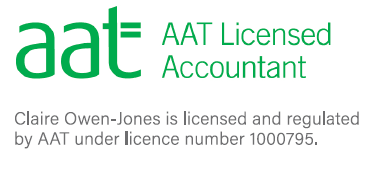It’s January and your accountant sits you down and tells you your tax liability and it’s high. Way higher than you expected. Panic begins to set in. This can’t be right you say to yourself. They must have calculated it wrong.
Welcome to the world of your first payment on account.
So, what is a payment on account?
The short answer is that it’s a prepayment of tax which is calculated based upon your previous year’s tax liability.
HMRC claim they are there to help you to spread the cost of your tax payments.
Really though, why do I have to make a payment on account?
When you are employed you work for a week or a month, and at the end of that period your employer tells HMRC how much you earned and passes the tax element onto HMRC on your behalf. This means you only every receive your income net of tax.
When you are self-employed, unless you work under the construction industry scheme (CIS), you received your income gross. Tax is something you can deal with later.
And later it is, as you do not have to pay your tax to HMRC until end of January the following tax year.
I know we generally talk about your business income in terms of years, so April 2017 to March 2018 as an example, rather than month by month. But think about this from HMRC’s perspective. An employee will pay tax on their April 2017 income in April 2017. A self-employed person will pay tax on their April 2017 profits in January 2019.
HMRC don’t like this delay. Not one bit.
Who must make a payment on account?
Fortunately, not everyone who completes a self-assessment tax return will have to make a payment on account.
To qualify, first your tax and national insurance liability must exceed £1,000. (So, your taxable business profits need to exceed approx. £13,500)
Secondly, less than 80% of your tax must have been deducted at source.
The second clause is in place to stop people having to make payments on account if there has been an error with their PAYE code for example. This could be due to receiving a company benefit such as a company car or health insurance, which was not adjusted for within your employment income.
You would expect these kind of PAYE errors to be corrected relatively swiftly, so a tax underpayment wouldn’t be enough of a regular occurrence for you to have to prepay for.
So, really payments on account are there for anyone who is self-employed, has a profitable property portfolio or receives a high level of dividends during the year. The sort of things that fall outside of PAYE and that you receive without tax already deducted.
How are payments on account calculated and when do they need to be paid?
Your payments on account are estimated based upon your current year earnings.
So, HMRC look at your current year and say, okay, I think you’ll earn the same next year. And based upon this, we would like 50% of that estimate now and 50% in 6 months’ time.
This is the reason why payments on account can be so painful in that the first one will be added to your current tax payment. Which effectively gives you a 150% tax liability in one lump.
The second payment on account will be due on 31 July.
To help you to visualise this, lets imagine that between 1 April 2016 and 31 March 2017 you made enough profit to generate a £5,000 tax liability. This would be due for payment by 31 January 2018.
Using HMRC’s estimate that between 1 April 2017 and 31 March 2018 you will also generate a £5,000 tax liability, they give you two payments on account of £2,500.
This means that by 31 January 2018, you now need to pay £7,500. And by 31 July 2018 you need to pay a further £2,500.
Very painful if you are not expecting it.
What happens in the year after I have made payments on account?
Generally, payments on account are only painful in the first year they are introduced.
This is because, by the time you reach the following January, you have already made two payments towards this tax liability.
So, assuming your business continues to grow, and profits and tax liabilities increase, you will only need to pay the difference plus the following year’s payment on account.
Again, to help you to visualise it:
For the 2016/17 tax year you had a tax liability of £5,000
At the same time, you made your first payment on account of £2,500
You also made a payment on account in July of £2,500
When your 2017/18 tax liability is calculated, you actually owe £6,000
However, you have already paid £5,000 in advance
This leaves £1,000 left to pay
Plus, a new payment on account of £3,000 for the following year
So, you only need to pay £4,000 by 31 January 2019
What if my profits are lower next year?
What you can do in this instance, depends on when you discover that your profits are lower.
If you only realise that they are lower once you have made both payments on account (so between August and January) HMRC will either offset your overpayment against the following year’s payment on account. Or you can arrange for a refund and then pay the following year’s payment in account in full at the end of January.
If you realise before you have made the second payment on account in July, you can submit your self-assessment tax return and pay a reduced amount come July; avoiding the overpayment scenario. Again, the following year’s payment on account will be due in full at the end of January.
However, if you know in advance that the following year will be lower, you can put in a claim to HMRC within your current self-assessment tax return to reduce the payments on account.
You will need to tell HMRC why you believe your profits will be lower and you will need to tell them what you expect your tax liability to be. But it does give you the flexibility to say, I know my tax bill was £5,000 this year but I expect it to only be £3,000 next year, so I’ll pay you two lots of £1,500 rather than £2,500.
What if I reduce my payments on account too far?
Sometimes, life can throw little curve balls at us, you so may have reduced your payments in account in good faith only to land a big project or get a surge in sales in the final months of your financial year.
If this happens and you discover that you have reduced your payment on account too far, HMRC will deem the underpayment of tax as being late and will apply interest to the difference from the date it would have originally been due.
If they conclude that you have reduced your payments on account purely so you can avoid paying tax they will also throw in penalties for good measure. These can be a substantial percentage of your overall tax liability depending on whether they believe you reduced the payments on account either carelessly or deliberately.
Should I budget for payments on account?
As a rough guide, payments on account will kick in once your taxable business profits exceed £13,500.
If your business profits have previously generated a tax liability of under £1,000 but you feel things are picking up, then yes, I would increase the amount you set aside for your tax bill.
If this is your first-year trading and your profits look as though they are going to surpass £13,500 then, once again, I would recommend stepping up the amount you put aside.
Once you are in the payment on account system, it becomes a lot easier and it does help you to spread the cost of your tax bills.
It’s just that first time though. That’s the killer. Especially if you were not expecting it.







